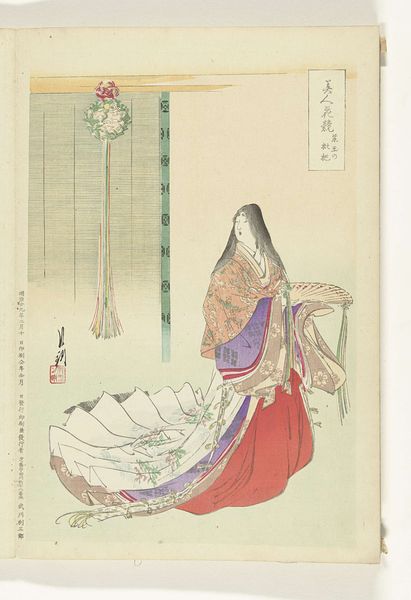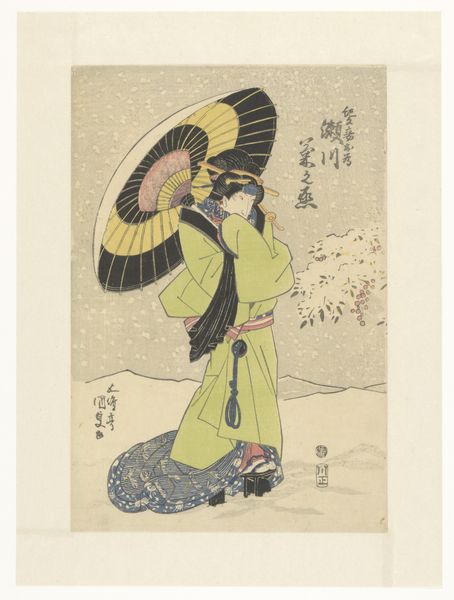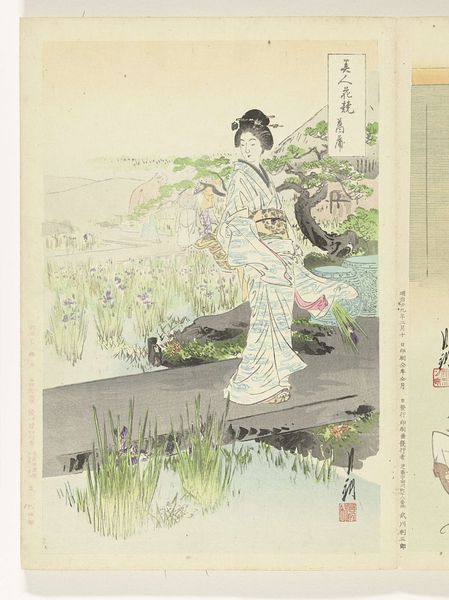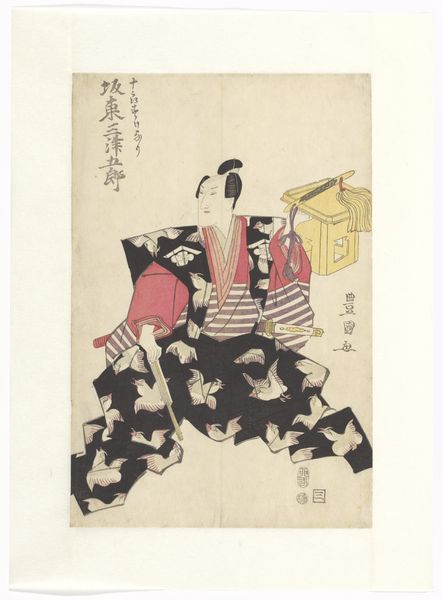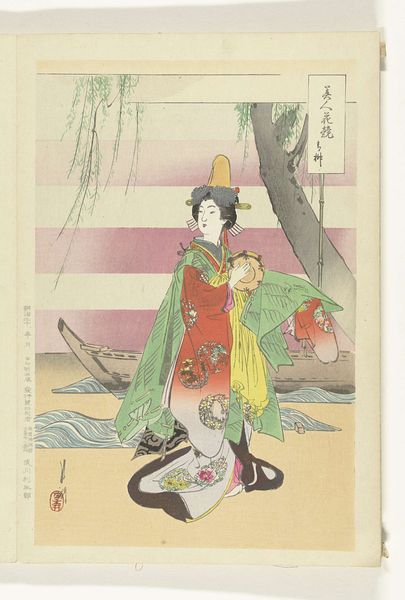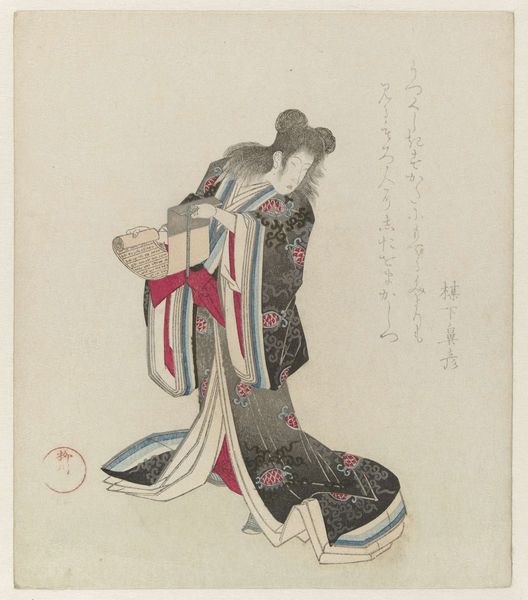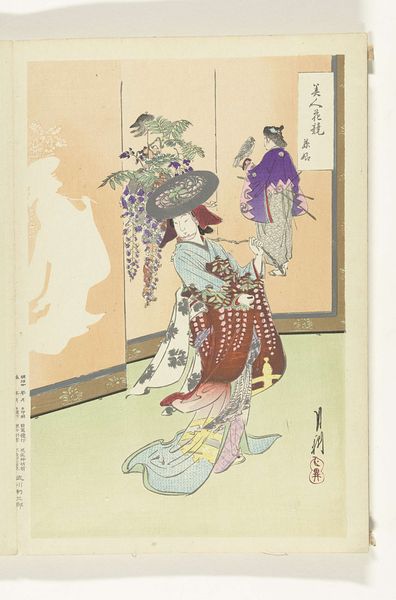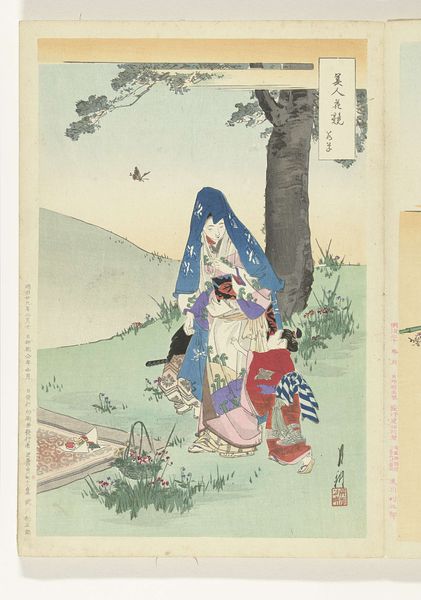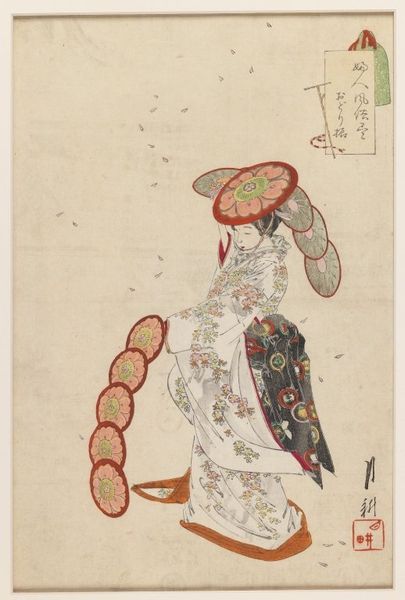
#
childish illustration
#
water colours
#
pastel soft colours
#
river
#
handmade artwork painting
#
personal sketchbook
#
watercolour bleed
#
watercolour illustration
#
cartoon carciture
#
sketchbook art
#
watercolor
Dimensions: height 350 mm, width 238 mm
Copyright: Rijks Museum: Open Domain
Curator: The Rijksmuseum holds a watercolor piece entitled "De vossengeest" attributed to Ogata Gekko, possibly from 1896. Editor: Well, my first impression is that the colors are surprisingly gentle; quite soft, really. There's something immediately calming about it. Curator: Absolutely. Gekko’s choice to utilize watercolors and their subsequent bleed gives the artwork this dreamy, ephemeral quality. How does the work challenge the conventional, more rigid boundaries between art and illustration through its handmade appearance and technique? Editor: I think it begins with the lines. Note the confident yet delicate calligraphic marks which define the figure’s kimono, especially those linear folds which establish depth. There’s such refined artistry here. Curator: And considering printmaking's historical role as a medium for disseminating images and information, it raises questions about the accessibility and consumption of art during that era. Were prints viewed as mass-produced commodities or were they celebrated for the craftsmanship involved? Editor: It's hard to ignore the artist's skillful control over color. Observe how he coaxes such vibrancy from, seemingly, a very restricted palette. That arresting blue against the subtle background washes works exceptionally well. Curator: Indeed, color choices likely held cultural meanings during Gekko's time, impacting the interpretation and reception of the print by the audience. Also, consider the materials and production involved in Japanese woodblock printing which was an industry and form of labour which would inform the context of consumption. Editor: On a deeper note, it's hard to extract this particular imagery of fashionable Meiji era figures in watery environments, from the historical context of how those depictions influenced notions of identity and national branding during Japan's transformation into a modern state. Curator: Precisely. We see how this seemingly innocent print touches on material practices, aesthetic sensibilities, and sociocultural contexts that invite us to re-evaluate traditional categories of art and craft. Editor: For me, I walk away struck by its harmony; the melding of simple compositional components into something really engaging, and even enduring.
Comments
No comments
Be the first to comment and join the conversation on the ultimate creative platform.


